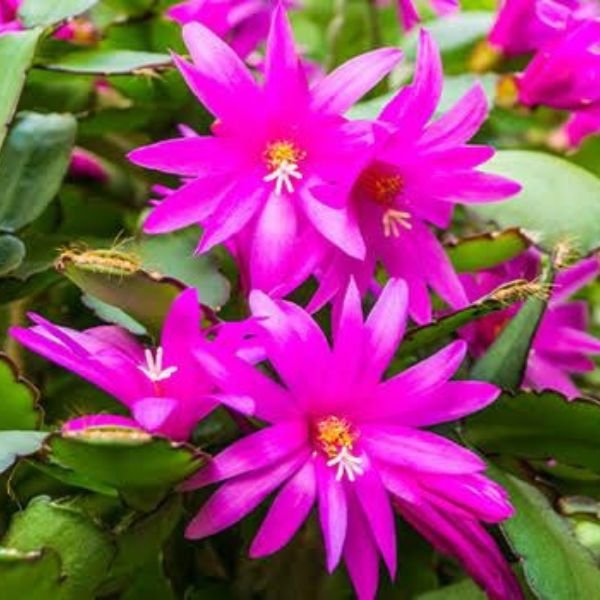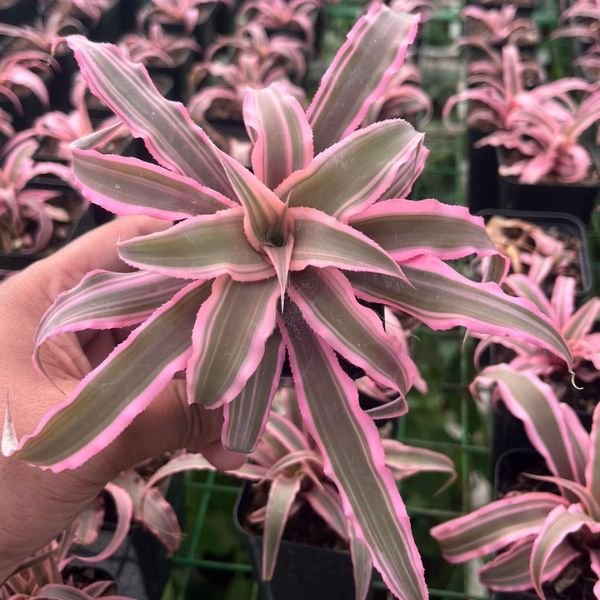Species orchid stands out as a precious variety that symbolises beauty. These orchids, also called wild orchids, are found in their natural habitats, such as forests and jungles, and are not artificially bred or hybridized. Dendrobium, Cattleya, Rhynchostylis, and many other species of orchids can be classified as wild orchids based on these criteria. Unlike other orchids, species orchids are not hybridized and remain true to their natural form, making them unique and valuable. Only a few renowned names are associated with these treasured orchids, which are highly valuable orchid enthusiasts.
Varieties of Species Orchid Found in India
India boasts a wide variety of exquisite orchids, including some of the most popular species. Among the most captivating are Dendrobium, Vanda, Cattleya, Rhynchostylis, Phalaenopsis, Ground, and Tiger orchids. These rare and sought-after orchids are typically imported from Thailand at great expense, but we cultivate them in our nursery with proper attention to detail to ensure their quality. Our website offers the added benefit of providing this species orchid at a fraction of the cost, so you can enjoy their beauty without breaking the bank.
Some of the Famous Dendrobium Orchids Available in Our Nursery:
Our nursery offers a diverse selection of famous dendrobium species orchids. Firstly, the hooded orchid, also known as Dendrobium aphyllum, features charming clusters of small purple flowers accented with pink. The shoe lip dendrobium, or crepidatum, offers delicate, fragrant blooms in shades of white and pinkish-purple that will leave a lasting impression.
For yellow lovers, the dense golden flowers and sturdy leaves of Dendrobium densiflorum can be a great addition. We also have smaller options like Dendrobium jenkinsii and medium to large-sized Dendrobium fimbriatum, both of which offer lovely yellow inflorescence. The yellow Dendrobium moschatum boasts a musk-like fragrance, while the rare white blooms of Dendrobium farmeri and MacRae offer a unique twist. Finally, our most popular orchid, Dendrobium nobile, is a crowd-pleaser with its unique blend of white, pink, and purple flowers. Be ready to please with such a diverse range of dendrobium species orchids available in our nursery.
Other Available Diverse Range of Species Orchid
Discover a multitude of species of orchid options from us that are sure to captivate your senses. One standout variety is the Fire Star species orchid, with its bright clustered reddish-orange blooms that resemble a blazing star. The Rhynchostylis Retusa, also known as the Foxtail orchid, is another rare and prized species with lovely white and pink blooms. To fulfil your craving for an unforgettable scent, consider cultivating the cream-colored and highly fragrant Coelogyne Flaccida. Aerides Multiflora is an exceptional species that boasts small, pink, and white flowers that bloom in dense clusters with a brilliant fragrance. Aerides odorata can be a great species with its fragrant white flowers accented with a touch of purple. The Ascocentrum ampullaceum variety features a stunning pinkish-purple textured flower that is sure to draw attention.
With a unique color combination, be sure to check out Phalaenopsis Mannii, Vanda Cristata, and Tessellatta. Each of these varieties is a true gem in the world of orchids, picking multiple options to make you cheerful.
Care Guide for Species Orchid
Temperature
Species orchid has diverse temperature preferences, with some thriving in high temperatures while others can withstand cooler temperatures. As a tropical plant, optimal daytime temperatures for orchid growth range from 20°C to 28°C. A slight decrease in temperature at night, ranging from 15°C to 22°C, is beneficial for the health of species orchids. This temperature drop can stimulate the orchids\’ natural growth and development processes. Focus on the agent causing the harm: Avoid extreme temperature fluctuations, both hot and cold, as they can be detrimental to the orchids\’ health.
Lighting
A well-lit environment is essential for the growth of species of orchids. Direct sunlight should be avoided as it can cause leaf burn and damage to the plant. These orchids thrive under bright, indirect light, achieved by placing them on windowsills, balconies, or patios that receive filtered light. Excessive or inadequate lighting can negatively impact their growth, so find a balance between them. The east or southeast window side is highly recommended as it provides adequate lighting for the orchids to flourish. It\’s crucial to maintain consistent lighting conditions, and if natural light is insufficient, artificial light can be used to supplement their growth. By keeping a close eye on their lighting needs, you can help ensure that your species of orchid remains healthy.
Humidity
Species orchids require a significant amount of moisture in the air to thrive. Ideally, the humidity levels should be maintained between 50-80%, which is crucial for their well-being. Proper air circulation with humidity is also necessary for these plants. A humidity tray filled with water and gravel, placed beneath the orchids, can help elevate the humidity levels in their surroundings. Additionally, expert gardeners can use misting techniques to provide the required moisture for Species orchids.
Watering
Consider regular watering in the growing periods, it\’s generally best to water your species of orchid each morning during this time. Sphagnum moss does not need everyday watering. Only water to keep the soil moist, don\’t overwater your orchid which will make the roots rot. In winter, these orchids don\’t require much watering like during the growing period. Once or twice a week watering can be sufficient for these orchids.
Fertilization
Provide proper fertilization for healthy species orchids. Fertilize your orchids once a week during their active growing periods. However, reduce fertilization to once a month during their resting period. To provide the necessary nutrients, you can choose a balanced fertilizer or a slow-release fertilizer.Avoid over-fertilizing the orchids, as this can cause various problems. Additionally, it is recommended to water the orchids thoroughly before fertilizing.
Potting, medium, and repotting
For properly potting your species orchids, use a small pot or container that has excellent drainage to ensure that the roots don\’t become waterlogged. Clear plastic pots can be particularly helpful, as they allow you to monitor the condition of the roots. When choosing a potting mix, there are several options to consider. The bark is a popular choice, as it provides good aeration and drainage for the roots. Sphagnum moss and fern are good options for potting mediums, although they hold onto moisture more readily, so you won\’t need to water them as often.
Repot your orchids every 2-3 years, as the potting medium can break down over time and become less effective. Use a new medium and a slightly larger container than the previous one for repotting to allow the roots room to grow. During the repotting process, take care not to damage the healthy roots and trim the damaged and dead roots.






